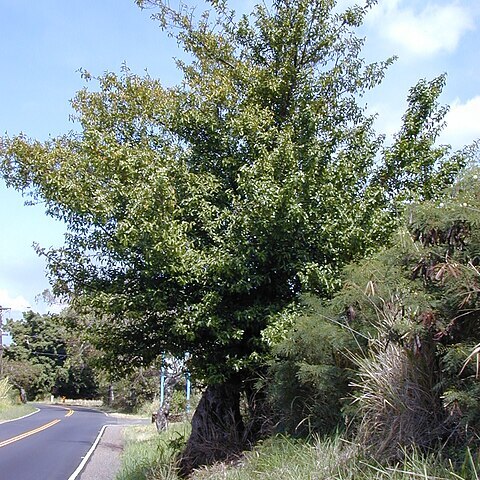Trees or shrubs, sometimes spiny. Stipules generally absent. Leaves distinctly petiolate; lamina usually thick and leathery; lateral nerves inconspicuous (at least in Africa), nervation reticulate. Flowers congested in axils of current or fallen leaves, sometimes cauliflorous, pedicellate. Sepals 5 (abnormally 4 or 6), ± free or very shortly connate at the base; lobes ± ovate or rounded. Corolla-lobes 5 (but see above), connate at base; tube well developed, frequently subequal to lobes in length. Stamens 5, as long as or a little longer than corolla. Staminodes present, petaloid or narrower and ligulate, with serrulate or irregularly laciniate margins. Ovary subglobose to conical, pilose, 5-locular; style robust, tapering to simple or ± capitate stigma. Fruit a single-seeded subglobose berry, with persistent style; skin thin with fleshy mesocarp. Seed subglobose or ± ovoid, with thickened stony wall; testa shiny brown; scar suborbicular or elliptic, basal; endosperm present; cotyledons flattened and foliaceous; radicle basal or lateral.
Seed subglobose to ovoid, often faintly pentangular; testa shiny, pale to dark brown; scar small, basal, subcircular; endosperm copious; embryo horizontal, with thin leafy cotyledons.
Flowers subsessile to petiolate, fascicled in axils of current and/or recently fallen leaves, usually pentamerous.
Gynoecium with subglobose, densely pilose ovary tapering at apex into the cylindrical style.
Stamens inserted at level of base of lobes; anthers extrorse, included to somewhat exserted.
Leaves exstipulate, coriaceous, with characteristic fine tertiary vein reticulation.
Fruit a 1–seeded subglobose berry with very sticky mesocarp; style persistent.
Petals united at base into a short to long tube.
Staminodes large, petaloid, entire to lacerate.
Calyx lobes almost free.
Shrubs and small trees.

